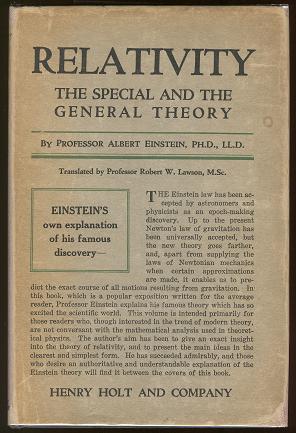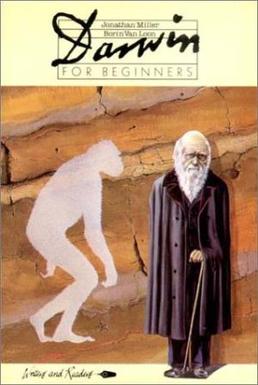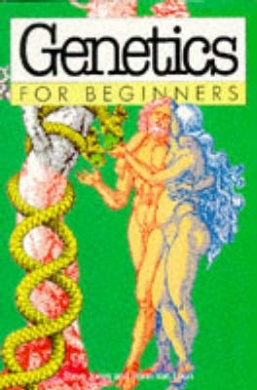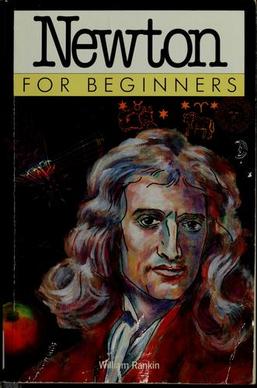
The theory of relativity usually encompasses two interrelated physics theories by Albert Einstein: special relativity and general relativity, proposed and published in 1905 and 1915, respectively. Special relativity applies to all physical phenomena in the absence of gravity. General relativity explains the law of gravitation and its relation to the forces of nature. It applies to the cosmological and astrophysical realm, including astronomy.
The following is a timeline of gravitational physics and general relativity.

The Large Scale Structure of Space–Time is a 1973 treatise on the theoretical physics of spacetime by the physicist Stephen Hawking and the mathematician George Ellis. It is intended for specialists in general relativity rather than newcomers.

Pantheon Books is an American book publishing imprint. Founded in 1942 as an independent publishing house in New York City by Kurt and Helen Wolff, it specialized in introducing progressive European works to American readers. In 1961, it was acquired by Random House, and André Schiffrin was hired as executive editor, who continued to publish important works, by both European and American writers, until he was forced to resign in 1990 by Random House owner Samuel Irving Newhouse, Jr. and president Alberto Vitale. Several editors resigned in protest, and multiple Pantheon authors including Studs Terkel, Kurt Vonnegut, and Barbara Ehrenreich held a protest outside Random House. In 1998, Bertelsmann purchased Random House, and the imprint has undergone a number of corporate restructurings since then. It is now part of the Knopf Doubleday Publishing Group under Penguin Random House.
Clifford Martin Will is a Canadian-born theoretical physicist noted for his contributions to general relativity.

John R. Gribbin is a British science writer, an astrophysicist, and a visiting fellow in astronomy at the University of Sussex. His writings include quantum physics, human evolution, climate change, global warming, the origins of the universe, and biographies of famous scientists. He also writes science fiction.

Albert Einstein presented the theories of special relativity and general relativity in publications that either contained no formal references to previous literature, or referred only to a small number of his predecessors for fundamental results on which he based his theories, most notably to the work of Henri Poincaré and Hendrik Lorentz for special relativity, and to the work of David Hilbert, Carl F. Gauss, Bernhard Riemann, and Ernst Mach for general relativity. Subsequently, claims have been put forward about both theories, asserting that they were formulated, either wholly or in part, by others before Einstein. At issue is the extent to which Einstein and various other individuals should be credited for the formulation of these theories, based on priority considerations.
Oscar Zárate is an Argentine comic book artist and illustrator. Zarate studied architecture and had a successful career in advertising in Argentina. He moved to Europe in 1971 and began to work in earnest as an illustrator. He has drawn for the UK comics magazine Crisis. In the Introducing... and ...For Beginners book series he illustrated texts written by Richard Appignanesi, Alexei Sayle, Dylan Evans, J P McEvoy, Angus Gellatly, Rupert Woodfin and Christopher Marlowe. He is perhaps best known in the United States as the artist for the graphic novel A Small Killing written by Alan Moore, one-shot story about a once idealistic advertising executive haunted by his boyhood self.

Gravitation is a widely adopted textbook on Albert Einstein's general theory of relativity, written by Charles W. Misner, Kip S. Thorne, and John Archibald Wheeler. It was originally published by W. H. Freeman and Company in 1973 and reprinted by Princeton University Press in 2017. It is frequently abbreviated MTW. The cover illustration, drawn by Kenneth Gwin, is a line drawing of an apple with cuts in the skin to show the geodesics on its surface.
For Beginners LLC is a publishing company based in Danbury, Connecticut, that publishes the For Beginners graphic nonfiction series of documentary comic books on complex topics, covering an array of subjects on the college level. Meant to appeal to students and "non-readers", as well as people who wish to broaden their knowledge without attending a university, the series has sold more than a million copies.
The Introducing... series is a book series of graphic guides covering key thinkers and topics in philosophy, psychology and science, and many others in politics, religion, cultural studies, linguistics and other areas. Books are written by an expert in the field and illustrated, comic-book style, by a leading graphic artist.

Relativity: The Special and the General Theory began as a short paper and was eventually published as a book written by Albert Einstein with the aim of explaining the theory of relativity.

Richard Appignanesi is a Canadian writer and editor. He was the originating editor of the internationally successful illustrated For Beginners book series, as well as the author of several of the series' texts. He is a founding publisher and editor of Icon Books. He was founding editor of the Manga Shakespeare series. He is a former executive editor of the journal Third Text, and reviews editor of the policy studies journal Futures.

Darwin for Beginners, republished as Introducing Darwin, is a 1982 graphic study guide to Charles Darwin and Evolution written by Dr. Jonathan Miller and illustrated by Borin Van Loon. The volume, according to the publisher's website, "unravels Darwin’s life and his contribution to biology, and traces the path from his scientific predecessors to the later modifications that his own evolutionary theories required."

Genetics for Beginners, republished as Introducing Genetics, is a 1993 graphic study guide to Genetics written by Steve Jones and illustrated by Borin Van Loon. The volume, according to the publisher's website, "takes readers on a journey through this new science to the discovery of DNA and the heart of the human gene map," and, "gives us the information," to, "make moral decisions where genetics plays a part."

The Universe for Beginners, republished as Introducing the Universe, is a 1993 graphic study guide to cosmology written by Felix Pirani and illustrated by Christine Roche. The volume, according to the publisher's website, "recounts the revolutions in physics and astronomy," from "Aristotle to Newton," and, "Einstein to Quantum Mechanics," "that underlie the present-day picture of the universe."

Introducing Relativity is a 2002 graphic study guide to the theory of relativity and Albert Einstein written by Bruce Bassett and illustrated by Ralph Edney. The volume is, according to the publisher's website, "a superlative, fascinating graphic account of Einstein’s strange world," which, "plots a visually accessible course through the thought experiments that have given shape to contemporary physics."

Newton for Beginners, republished as Introducing Newton, is a 1993 graphic study guide to the Isaac Newton and classical physics written and illustrated by William Rankin. The volume, according to the publisher's website, "explains the extraordinary ideas of a man who [...] single-handedly made enormous advances in mathematics, mechanics and optics," and, "was also a secret heretic, a mystic and an alchemist."

A History of the Theories of Aether and Electricity is any of three books written by British mathematician Sir Edmund Taylor Whittaker FRS FRSE on the history of electromagnetic theory, covering the development of classical electromagnetism, optics, and aether theories. The book's first edition, subtitled from the Age of Descartes to the Close of the Nineteenth Century, was published in 1910 by Longmans, Green. The book covers the history of aether theories and the development of electromagnetic theory up to the 20th century. A second, extended and revised, edition consisting of two volumes was released in the early 1950s by Thomas Nelson, expanding the book's scope to include the first quarter of the 20th century. The first volume, subtitled The Classical Theories, was published in 1951 and served as a revised and updated edition to the first book. The second volume, subtitled The Modern Theories (1900–1926), was published two years later in 1953, extended this work covering the years 1900 to 1926. Notwithstanding a notorious controversy on Whittaker's views on the history of special relativity, covered in volume two of the second edition, the books are considered authoritative references on the history of electricity and magnetism as well as classics in the history of physics.

Subtle is the Lord: The Science and the Life of Albert Einstein is a biography of Albert Einstein written by Abraham Pais. First published in 1982 by Oxford University Press, the book is one of the most acclaimed biographies of the scientist. This was not the first popular biography of Einstein, but it was the first to focus on his scientific research as opposed to his life as a popular figure. Pais, renowned for his work in theoretical particle physics, was a friend of Einstein's at the Institute for Advanced Study in his early career. Originally published in English in the United States and the United Kingdom, the book has translations in over a dozen languages. Pais later released a sequel to the book in 1994 titled Einstein Lived Here and, after his death in 2000, the University Press released a posthumous reprint of the biography in 2005, with a new foreword by Roger Penrose. Considered very popular for a science book, the biography sold tens of thousands of copies of both paperback and hardcover versions in its first year. The book has received many reviews and, the year after its initial publication, it won both the 1983 National Book Award for Nonfiction, in Science (Hardcover), and the 1983 Science Writing Award.















